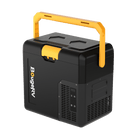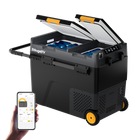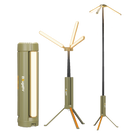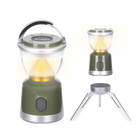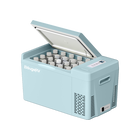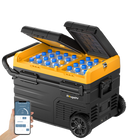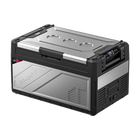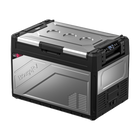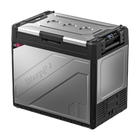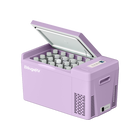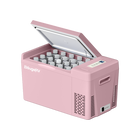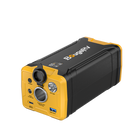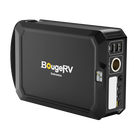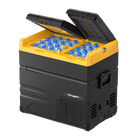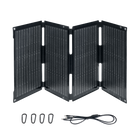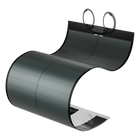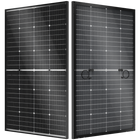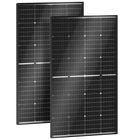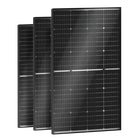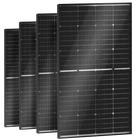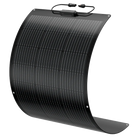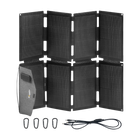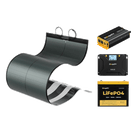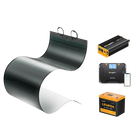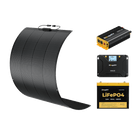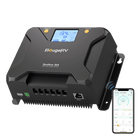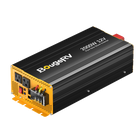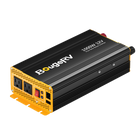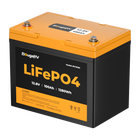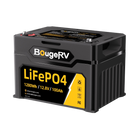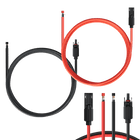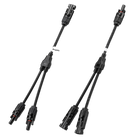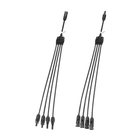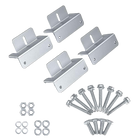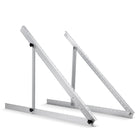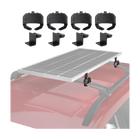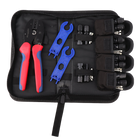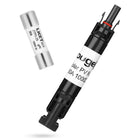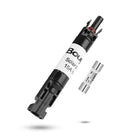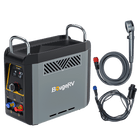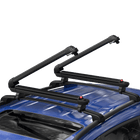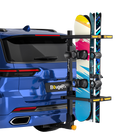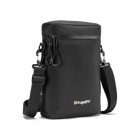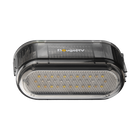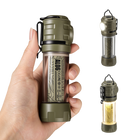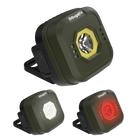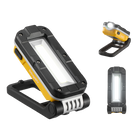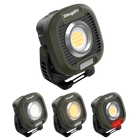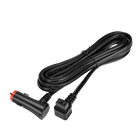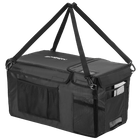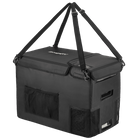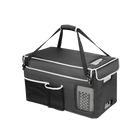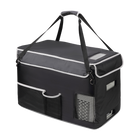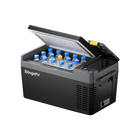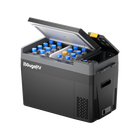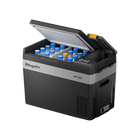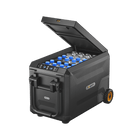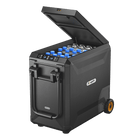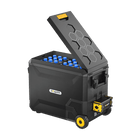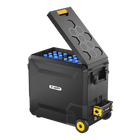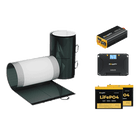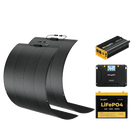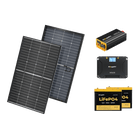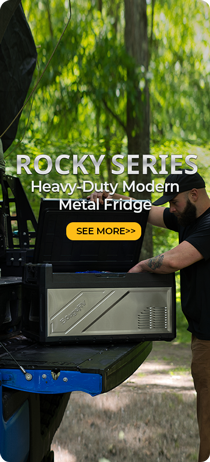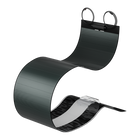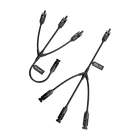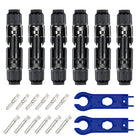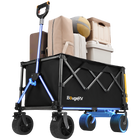Modified vs. Pure Sine Wave Inverter: What's the Difference?

If you’re diving into the world of inverters, you've probably stumbled upon two terms that might seem a bit mysterious: “modified sine wave” and “pure sine wave” inverters. What’s the big deal between these two? Which one should you choose for your needs? Let’s break it down together in this blog!
Understanding Inverters
Before diving into the details, let's go over the basics. An inverter is a device that converts Direct Current (DC) from sources like batteries or solar panels into Alternating Current (AC), which powers most household appliances. Think of it as the middleman ensuring your gadgets get the right kind of power.
The Role of Waveforms
The difference between modified and pure sine wave inverters comes down to the type of AC waveform they produce. This may sound like electrical jargon, but we promise it’s not too complicated once you dig in.
Pure Sine Wave Inverters

Smooth Operator

A pure sine wave inverter produces a smooth, continuous wave that closely mimics the power you get from the grid. If you were to look at it on an oscilloscope (a tool that measures waveforms), you'd see a nice, rounded sine wave.
Compatibility and Performance
Pure sine wave inverters are the gold standard when it comes to compatibility. They work seamlessly with almost any electronic device, from your refrigerator to your laptop charger. Why? Because most modern electronics are designed to operate on a pure sine wave.
Benefits
- Cleaner Power: Since the waveform is smooth, it provides cleaner power, reducing the risk of damage to sensitive electronics.
- Efficiency: Devices run more efficiently, often using less power.
- Less Interference: There's minimal interference, so your devices are less likely to experience buzzing noises or complications.
- Versatility: Whether it's a medical device, microwave, or gaming console, a pure sine wave inverter can handle it all.
Downsides
Of course, nothing is perfect. The main drawback of pure sine wave inverters is their cost. They can be 50% to 100% more expensive than their modified counterparts, but many of us consider the price worth it for the added reliability and performance.
Modified Sine Wave Inverters
Choppy Waters

A modified sine wave inverter, on the other hand, produces a waveform that's more like a series of steps rather than a smooth curve. Picture a staircase instead of a gentle slope. This means the power isn’t as "clean" as what you’d get from a pure sine wave inverter.
Compatibility and Performance
These inverters can still power a wide range of devices, but they're not as universally compatible as pure sine wave inverters. For instance, some devices may run less efficiently or even get damaged over time due to the choppier waveform.
Benefits
- Cost-Effective: Modified sine wave inverters are generally cheaper, making them an attractive option for budget-conscious consumers.
- Simplicity: Often easier to install and maintain.
- Adequate for Simple Devices: Ideal for less sensitive electronics like simple power tools, older TVs, and basic kitchen appliances.
Downsides
- Limited Compatibility: Not suitable for all devices, particularly those with delicate circuitry.
- Efficiency Issues: Some devices may use more power or run hotter.
- Interference: Potential for buzzing sounds or other forms of interference, especially with audio equipment.
Choosing Between Modified and Pure Sine Wave Inverters
So, which one should you pick? Here’s a quick guide to help you decide.
Choose Pure Sine Wave Inverter When:

- You Have Sensitive Electronics: If you're running medical equipment, newer TVs, laptops, or other sensitive gadgets, stick with pure sine wave inverters.
- You Value Efficiency: You want your devices to run as efficiently as possible.
- You Need Reliable Performance: Ideal for RVs, off-grid living, or any setup where consistent performance is crucial.
Choose Modified Sine Wave Inverter When
- You’re on a Budget: If cost is a significant factor, and you don’t need to run highly sensitive electronics.
- Basic Needs: You're mostly powering simple devices like older appliances or basic power tools.
- Occasional Use: If you’re planning to use the inverter infrequently, this could be a more economical choice.
Real-World Examples
Let’s put all this theory into practice with some real-world scenarios!
Scenario 1: The Off-Grid Cabin
Think about you have a cozy cabin in the woods, totally off the grid. You’ve got solar panels and a battery bank, and you need an inverter to power your lights, a small fridge, and maybe a laptop.
Recommendation: A pure sine wave inverter would be ideal here. Since you’re relying solely on this system, you’ll want the reliability and efficiency it offers.
Scenario 2: The Full-Time RV Explorer
You’re living the dream of traveling across the country in your RV, making it your home on wheels. You need an inverter to power a variety of devices, including your lights, a microwave, a laptop, and even some sensitive electronics like a smart TV.
Recommendation: A pure sine wave inverter would be the best choice for this lifestyle. It provides clean, consistent power that ensures all your electronics run smoothly and safely, which is crucial when you rely on these devices daily during your travels.
Scenario 3: The DIY Workshop
You’ve set up a workshop in your garage with various power tools, including a drill press, sander, and a basic table saw. You also have an old TV to keep you entertained while you work.
Recommendation: A modified sine wave inverter should work just fine. Most power tools and older electronics can handle the choppier waveform without issue.
Scenario 4: The Tech-Savvy Homeowner
You have a home backup system with solar panels, and you want to be prepared for any power outages. Your setup must support everything from your refrigerator to your home office equipment.
Recommendation: Go with a pure sine wave inverter. It ensures all your devices run smoothly and efficiently, providing peace of mind during outages.
Making the Final Decision
When deciding between a modified and pure sine wave inverter, consider both your current and future needs. Think about the types of devices you plan to power and how often you’ll use them.
While it might be tempting to some cash initially with a modified sine wave inverter, remember that opting for a pure sine wave model can pay off in the long run with better performance and broader compatibility.
Final Thoughts

Till now, you’ve understood the differences between modified and pure sine wave inverters. This knowledge can really boost your setup's performance and reliability.
Whether you're gearing up for an off-grid adventure, setting up a home backup system, or just tinkering in your garage, there's an inverter that fits your needs.
Remember, the key is to match the inverter to your specific requirements. Don't just go for the cheapest option; think about what will offer the best performance and longevity for your devices!






